- Home
- Gerald Hammond
Doghouse (Three Oaks Book 3) Page 3
Doghouse (Three Oaks Book 3) Read online
Page 3
‘That was almost all I knew,’ Beth said. ‘There seemed to be hundreds of people at the funeral, but every one of them shied away from the subject. They only wanted to talk about what a loss he was to the world of art. But don’t talk about it, Hattie, if it still upsets you.’
Hattie put her elbows on the table and looked down between her hands. ‘I can talk about it now,’ she said quietly. ‘At first, I couldn’t even think about it but now . . . it’s time that I came to terms with it. I’ll tell you the way it was.
‘George always loaded his own cartridges. Not the ordinary ones – he said that he could buy them as cheaply as he could load them. But he said that the big cartridges for the geese were overpriced. He didn’t have one of the new machines, he said that for all the cartridges he fired it’d take fifty years to pay for itself.’
‘True,’ I said. The foreshore wildfowler, when his luck is out, can go through a season on a dozen cartridges.
‘George had an old set of hand tools which he’d bought in a junk shop many years ago. He kept them at the work-bench in his studio. The evening it happened, he was planning to go out with his gun first thing in the morning. He left me in the living room and went through to finish reloading a few more cartridges, just in case the pinkfeet were still using the flight-line he had been watching a few days before, so he said.
‘Only a moment later, there was a terrible bang. The house shook and everything in it seemed to rattle and there was a smell of smoke. I ran through. George was on the floor beside his work-bench.’ She looked up at us suddenly. ‘He was moving. At first, I thought that he might not be badly hurt. But then I saw what was left of his head and there was no doubt in my mind that he was dead or as good as. No man could have lived with so much damage to his head. It was just the nerves still making him move. I think that that was the worst thing about it, him still moving like that although I knew that he had to be dead . . .’
If it had not been self-evident that the mental picture would be distressing to Hattie, her face would have told us. Unable to think of a major change of subject I tried a minor one. ‘Did they ever discover how it happened?’ I asked.
Hattie’s face calmed. ‘The police decided that it had been a simple accident. He was a smoker, you see.’
‘I expect that they were right,’ I said gruffly. I tried and failed to think how to give the conversation another twist.
‘Aye.’ She looked out of the window into darkness for a few seconds. ‘I haven’t brought myself to go into the place since that moment,’ Hattie said. She seemed ashamed to admit to such a weakness. ‘But he was a canny man. He never smoked when he was loading. He aye liked a pipe after his tea, but that evening he’d sat and smoked it in the living room, keeping me company. Only when he’d finished and knocked it out did he go through.’
‘And the explosion came just a few seconds later?’ Beth asked. ‘Could a spark have been clinging to his clothes?’
‘It’s possible,’ Hattie said. ‘I used to say I was going to buy him only clothes patterned with little brown spots, so that the burns wouldn’t show. But he was aye the first to notice the smell of cloth burning.’ She shrugged. ‘Likely that’s what happened. I can’t see it, myself, but it’s as difficult to think of any other way. God knows I’ve tried, though I don’t know about these things.’ She paused and seemed to give herself a mental shake. When she spoke again, she was back to her brisk and forceful self. ‘I don’t suppose we’ll ever know for sure. Come away through to the living room while I put the kettle on. You’ll take a dram?’ she asked me. ‘George liked a glass after his tea, with his pipe.’
The living room epitomised the house – comfortable, faded, but the furnishings had been the best in their day and were probably worth real money by now, as much even as the three George Muir paintings which hung on the walls. These were plain landscapes without the wildlife with which he had made his name. I guessed that the conventional colours of the room were the choice of Hattie rather than of the artist. A photograph of George Muir stood in a silver frame on the mantel – a man in his late fifties, still slim and upright, with a military moustache. He had an avuncular look but, unless the gleam in his eye was a trick of the photographer’s lights, he had had more than a touch of the devil in him. A Labrador with grizzled jowls, dozing in front of the fireplace, spared us no more than a disinterested glance.
Hattie fetched a nearly full Glenfiddich bottle out of a wall cupboard and I accepted a small glass topped up with water. The late Uncle George’s habits still prevailed and, while some might have considered them eccentric, my still delicate stomach preferred to receive its occasional helpings of spirits on top of a meal rather than before it.
‘While I’m in the kitchen,’ Hattie said, ‘you may like to go through and choose yourselves one of George’s pictures, the way his will said. I doubt there’s not many of them are undamaged.’
The word ‘doubt’, in the Scots language, can mean the very reverse of its English meaning. I puzzled my way through the multiplicity of negatives. ‘Don’t you want to pick any of the undamaged ones for yourself?’ I asked.
‘Bless you, I’ll not fash myself,’ Hattie said, almost cheerfully. ‘George’s will said that Beth was to get first pick and Edgar next. Edgar’s been at me already, wanting to take one for himself, but I said no, he could just wait his turn. These three were my favourites and they’re left to me. They’ll do.’ She nodded to each of the three paintings on the walls, greeting old friends. The places rather than the paintings had memories for her.
‘I’d rather remember Uncle George’s studio the way it was,’ Beth said. She tried to suppress a shiver. ‘I’ll help with the washing up. John, you go and choose us one of his paintings. I’ll go along with whatever choice you make.’
Hattie showed me the door of the studio and vanished quickly before I could open it. Beth blew me a kiss and followed her. I was left to enter the ruined room on my own. The background scent changed suddenly from old, mellow pipe-smoke to an acrid smell of burned nitrocellulose which suddenly evoked for me a nostalgic memory of the army and long days on the firing range.
It had been a pleasant room, built onto the side of the house with an artist’s needs in mind. Tall, north-facing windows and an angled skylight had admitted steady light in daytime and I noticed that the fluorescent lamps were of the type which most nearly simulates the spectrum of daylight. The ceiling, and as much of the walls as were visible, were painted a pale, unobtrusive grey.
One of the windows held plywood where a pane had been blown out, but otherwise the room was as the explosion had left it, complete with some unpleasant stains on the hardwood floor. The force of the blast had gone mainly upward, so that the work-bench which stood opposite the windows was almost undamaged but the ceiling above it was on the point of disintegration.
A low cupboard, which stood like an island in mid-floor beside a large easel, was littered with the paraphernalia of painting. The canvas on the easel showed only a few charcoal lines, but the shape of a river backed by a line of dunes jumped to the eye.
As I moved towards the work-bench, something gritted underfoot. Looking down, I saw that some lead shot, larger than game shot but smaller than BB, had been spilled among the other debris. A briar pipe and a large ashtray lay near the end of the bench beside an overturned stool. Uncle George might have been a canny man when he came to reload, but it seemed that he had allowed himself the occasional pipe in the studio when otherwise engaged. Empty twelve-bore cartridges were scattered around, apparently from a plastic box which had been blown across the room. I picked one of them up. It was a twelve-bore, three inch magnum case. It had been previously fired, as I could tell from the blackening around the crimp, but the percussion cap had already been replaced.
As a former reloader myself, I could make some sense of the scene. Uncle George had already sized and reprimed his cases – that, I thought, was a job which he could do at any time, smoking or not. The next step wou
ld have been the loading of the propellant powder, and for that he had sensibly waited until he had finished his postprandial pipe.
The metering out of powder and shot would have been done by means of small measures with spoonlike handles, and for that one needs a broad dish. Beth’s uncle had kept his powder in a heavy, cast-iron pot which, charred and slightly deformed, still stood in the middle of the bench. A similar pot standing at the back of the bench, and which was too heavy to have been moved even by the explosion, held shot similar to the pellets on the floor. It had a tightly fitting lid but of thinner metal than the pot, and the shreds of metal scattered throughout the studio suggested that an identical lid on the pot of powder had fragmented. The effect had been like shrapnel. A polythene bag of fibre wads had been blown unopened across the room.
But I had come to look at pictures, not to recreate in my mind the last moments of a well-known artist.
Like many another painter, George Muir had kept a large stock of unsold canvases in hand. With some, he had probably been dissatisfied. Others might have been recently finished or had been held back with some exhibition in mind. Unfortunately, instead of racking them or storing them away he had kept them hanging on hooks from picture rails at three levels. Around and between them were hung the skins of birds and animals, easy sources of reference for colour and texture.
Nearly all the paintings were damaged by smoke or flying metal or both. Worse still, the few paintings which seemed to have escaped had been mere landscapes; competent enough work in their way but without the wildlife which had been his forte. Some of them struck my uneducated eye as definitely mundane. I wondered whether these were early works or background studies waiting for wildlife subjects to present themselves for incorporation.
The other paintings were more to my taste, perhaps because of the gems which they contained rather than for any difference in technique. A badger snuffling beneath rhododendrons. Rabbits playing on a grassy slope. Red deer high on a barren hill. But best of all, the birds. Soaring in mating flight, fleeing, stooping on prey, somehow magically alive and moving against backgrounds which were hazier and yet perfect – scenery that one seemed to know, skies which were dramatic but totally believable.
I had carried my drink with me. I took a long sip while I studied the paintings.
Most of them were badly damaged, ripped by large fragments of metal or peppered by smaller. A magnificent painting of a golden eagle, standing over its egrets and preparing to take off, had escaped the flying splinters and had been only lightly stained by smoke, but had been dislodged from its hook and in falling had impaled itself on a wooden chair back. It was, in any case, too powerful a subject for hanging in the peaceful sitting room at Three Oaks. I would never have relaxed under that painting for fear that the eagle would take me for a threat to its young . . .
I settled at last, as I had known I would, on a painting of geese. One corner had been damaged but the flap of canvas was complete. A few tiny holes resembled those made by death watch beetle, but the beetle does not attack canvas. A day’s attention from a competent restorer and the damage would never be seen again. It showed a skein of pinkfeet in a glassy dawn, coming in off an estuary which I thought might be Loch Striven. The skein was unsteady, disturbed and changing direction. There was something about the furthest goose, which perspective had made the smallest. Close up it was only a splodge of half-mixed pigments but when I stood back I saw that it had already been shot and was beginning to fall. From further back still the jumbled colours resolved themselves into the barred chest of a whitefront – a protected species in Scotland although not in the south. Beth’s uncle had had a mischievous sense of humour.
While I had been agonising over my choice I had been nagged by inconsistencies in the other picture – my mental one of the fatal accident. Starting with the image of the man in the photograph, I could picture George Muir entering the room, settling on his stool, setting out his box of empty cartridges and pulling forward the pot of powder. Perhaps he had refilled it. I could see the explosion, the flying shrapnel and the artist thrown backwards, horridly mutilated. I could hear the clatter of the broken window pane. Some of the fragments of glass lay inside, on the window sill. The effects of blast often include suction.
But what came between the arrival of George Muir and the explosion? I drifted back to the bench. I was very aware of being a stranger in the silent, ravaged room.
There were no loading tools to be seen. Under one end of the work-bench there was a stack of narrow drawers. The lower drawers held simple woodworking tools. From these and some battens under the bench I inferred that George Muir had made his own stretchers for canvases. An electric grinder bolted to the end of the bench would have been used for sharpening tools. That could certainly have created a whole shower of sparks, which might have triggered the explosion. But it was not easy to picture a sequence which would culminate with the sharpening of a knife or chisel while the powder was uncovered, even if George Muir were to be so careless.
The top drawer held a beautiful set of ivory-handled loading tools, a tin of powder and a bag of shot. There were also a couple of fishing reels and a book of flies. This was George Muir’s store for his smaller sporting equipment – guns and rods would be kept elsewhere, probably under lock and key. One of the reels was loaded with nylon line, the end of which was attached to a drawing-pin in the bottom of the drawer. George Muir, I decided, had anchored his line while winding it onto the spool of the reel.
Beth’s uncle had lifted the lid of his powder container before rather than after taking out his loading tools. Well, why not?
But where had the spark come from? Any activity involving the bench grinder seemed incompatible with preparations for hand-loading cartridges. And, if the lid had been lifted, how had it come to be blown around like shrapnel? Furthermore, with the lid up the propellant powder would be unconfined and would have burned rather than have exploded. On the other hand, with the lid closed, how would a spark reach the powder?
I was looking down on the bench while I thought about it. A dark line across the pale wood led my eye back to the powder pot. A charred mess still lay in the bottom – burnt powder and something else. I stirred it with my finger and guessed that he had lined the bottom of the pot with paper.
What I had taken to be a fleck of some pale material came into focus and I realised that there was a tiny hole near the bottom of the pot. That could explain a lining of paper. The hole was almost aligned with the dark streak on the bench-top.
But this made little or no sense. The hole was too small for any fuse which I had ever seen. On the other hand, it was as large as the touch-hole in a flintlock. If a flame were led to it from outside . . . But who could light a fuse with reasonable certainty that George Muir would be arriving at his work-bench as the flame reached the powder?
A wife, I decided suddenly. A wife who could see her husband knocking out his evening pipe and preparing to move; and who would know from habit just how long it always took him to reach his bench.
But that would still be uncertain. He might detour to the lavatory, or move quickly and arrive in time to smell the burning fuse and get out of harm’s way.
There was another way of looking at it. Suppose somebody had knocked him on the head, inflicting injuries which would be obliterated in the subsequent explosion. Prop him, dead or unconscious, over the pot of explosive. Light the blue touchpaper and retire immediately.
Who? The widow again. The widow, the one person in a position to swear that the explosion had come only seconds after her husband entered the studio, who could brush away any traces remaining of the fuse, who was just not interested in such of her husband’s paintings as could be destroyed. She might not have realised that many thousands of pounds would be knocked off the value of her inheritance. Or she might not have cared. George Muir had been selling his paintings for very high figures for a long time and he had lived modestly. He had certainly not died a pauper.
I p
icked up the stool, perched on it and finished my drink slowly while I thought it over.
The bottom drawer held, among other tools, a mallet and a tack-hammer. Without lifting them I could not detect any traces of blood or skin or hair, but any competent forensic scientist would be able to tell what had last been struck with either of them.
Was it any of my damn business? Yes, I decided, it was. Before my illness I had served Queen and country by killing or attempting to kill whoever was identified as their enemy, so I had no phobias about the sanctity of human life. If he had been a blackmailer or a drug-dealer I would have nodded and gone on my way. But a major talent had been wiped out. It was everybody’s business.
Was I sure? No. But I was damned if I could think of a better explanation for all the known facts.
What was I going to do about it? After very little more thought, I decided that the less I said, to Beth or to her aunt by marriage, the better. A quiet word in confidence with the police and I would have done all that was necessary. I could step back and leave it to them, duty done and conscience clear, and nobody need know that I had ever had any suspicions, let alone voiced them. So I thought, in my innocence.
It was very quiet in the room. The darkness outside the uncurtained windows seemed to be full of eyes. I forced myself to relax. I spent another few minutes in tidying the whole problem away to the back of my mind. I still had to get through a weekend with Beth and the widow. So I arranged my features in a smile and carried the large canvas through to the living room.
Chapter Three
Beth and Hattie were sitting together and deep in a conversation which they broke off as I entered. I was quite used to such behaviour. Beth’s conversations with Isobel were often similarly truncated. Sometimes it was girl talk, but more often the subject was matrimonial probabilities or my state of health.

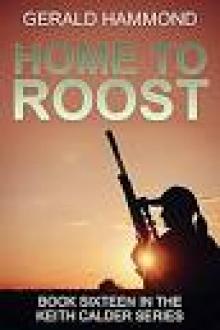 Home to Roost
Home to Roost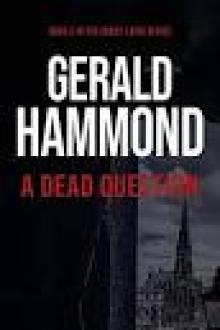 A Dead Question
A Dead Question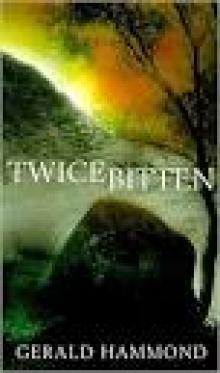 Twice Bitten
Twice Bitten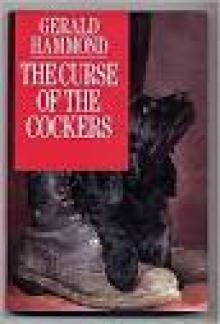 The Curse of the Cockers
The Curse of the Cockers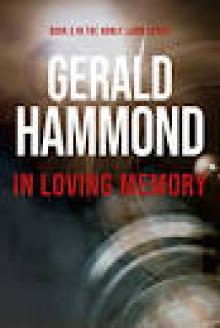 In Loving Memory
In Loving Memory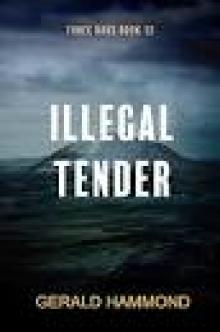 Illegal Tender (Three Oaks Book 12)
Illegal Tender (Three Oaks Book 12)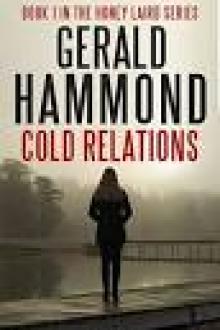 Cold Relations (Honey Laird Book 1)
Cold Relations (Honey Laird Book 1)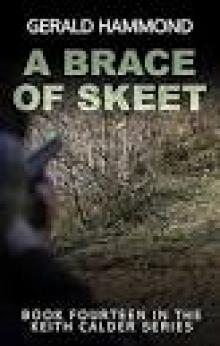 A Brace of Skeet
A Brace of Skeet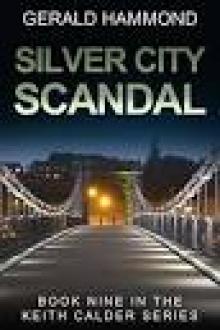 Silver City Scandal
Silver City Scandal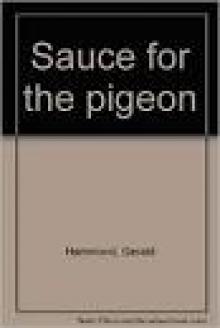 Sauce For the Pigeon
Sauce For the Pigeon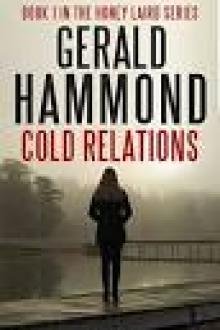 Cold Relations
Cold Relations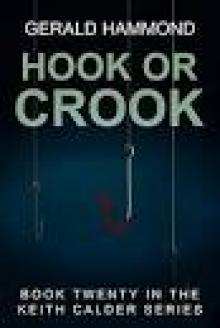 Hook or Crook
Hook or Crook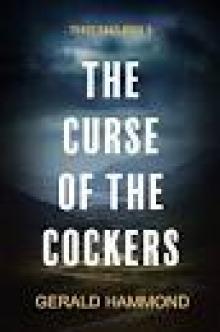 The Curse of the Cockers (Three Oaks Book 5)
The Curse of the Cockers (Three Oaks Book 5)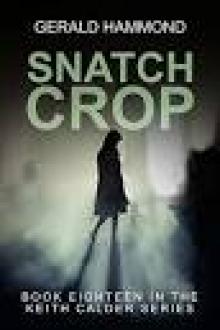 Snatch Crop
Snatch Crop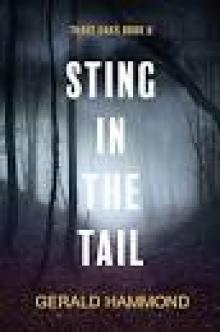 Sting in the Tail (Three Oaks Book 6)
Sting in the Tail (Three Oaks Book 6)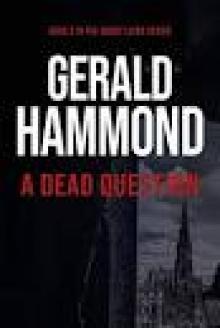 A Dead Question (Honey Laird Book 2)
A Dead Question (Honey Laird Book 2)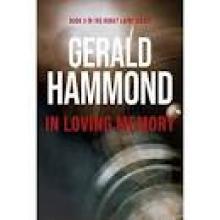 In Loving Memory (Honey Laird Book 3)
In Loving Memory (Honey Laird Book 3)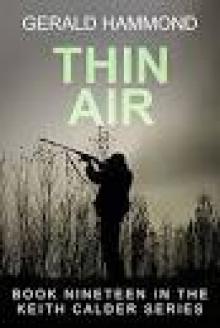 Thin Air
Thin Air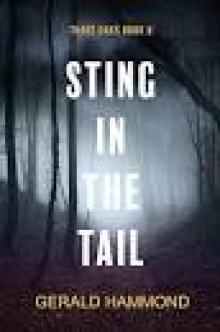 Sting in the Tail
Sting in the Tail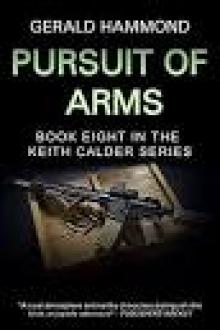 Pursuit of Arms
Pursuit of Arms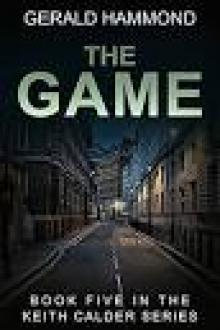 The Game
The Game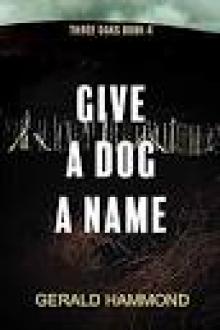 Give a Dog a Name (Three Oaks Book 4)
Give a Dog a Name (Three Oaks Book 4)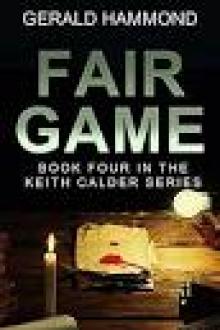 Fair Game
Fair Game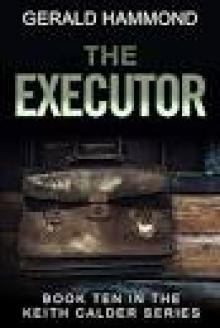 The Executor (Keith Calder Book 10)
The Executor (Keith Calder Book 10) Whose Dog Are You? (Three Oaks Book 2)
Whose Dog Are You? (Three Oaks Book 2)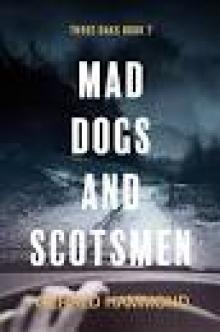 Mad Dogs and Scotsmen (Three Oaks Book 7)
Mad Dogs and Scotsmen (Three Oaks Book 7) Cousin Once Removed
Cousin Once Removed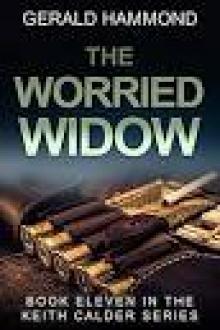 The Worried Widow
The Worried Widow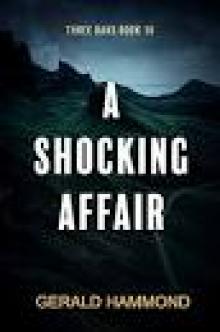 A Shocking Affair
A Shocking Affair Dead Weight (Three Oaks Book 11)
Dead Weight (Three Oaks Book 11) Whose Dog Are You
Whose Dog Are You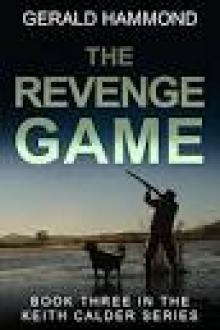 The Revenge Game
The Revenge Game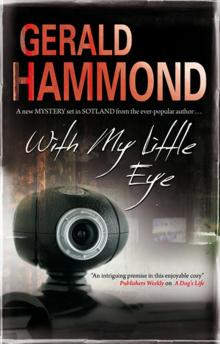 With My Little Eye
With My Little Eye Doghouse (Three Oaks Book 3)
Doghouse (Three Oaks Book 3)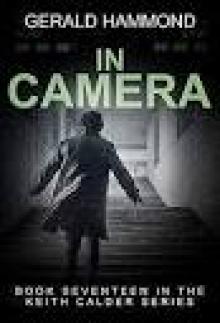 In Camera
In Camera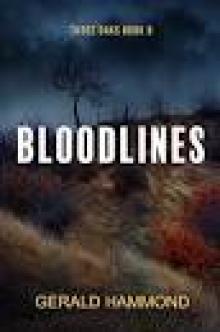 Bloodlines (Three Oaks Book 8)
Bloodlines (Three Oaks Book 8)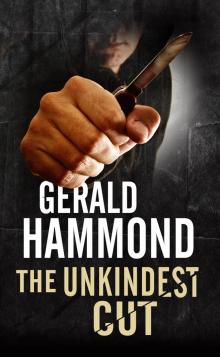 The Unkindest Cut
The Unkindest Cut